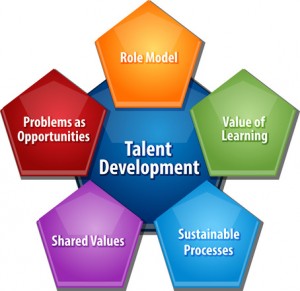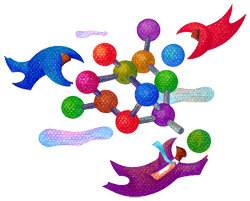Happier Work Life
 Going into the New Year we hear a lot of talk about getting in shape, eating healthily and making sure we exercise daily. Certainly that’s all well and good – especially after our indulgences of the holiday season. But maybe even more important is our mental well-being.
Going into the New Year we hear a lot of talk about getting in shape, eating healthily and making sure we exercise daily. Certainly that’s all well and good – especially after our indulgences of the holiday season. But maybe even more important is our mental well-being.
We are often defined by our work. Our work gives us structure and purpose. But what happens when you are sick of your job? Should you quit? While there comes a time when a job change is what we need, very often the fact that we are unhappy at work is the result of our own neglect. Perhaps it’s the routine of going to work every day. Or maybe it has to do with your long standing devotion to the work you do. It’s hard sometimes to shake the feeling of inadequate fulfillment at work.
What can we do? While there are all kinds of ways that you can make your job more interesting, or your attitude more positive (see our Tips for Being Happier at Work), our quest this month is to make that happier attitude a constant in your life.
Two things that are discussed frequently when it comes to work life satisfaction, include:
- Focusing on learning opportunities, and
- Reaching an intense state of focus.
According to a recent article by Fast Company, to achieve real happiness at work, we should focus on what we are learning in our job and building on that set of skills. There are a lot of ways we can go about building our knowledge base.
Research. Fortunately, we live in the internet era. You can find information online about any subject. Stick to known and reputable sites and you’ll likely find lots of information on the skill you are trying to build. And don’t forget to check out podcasts and videos. It’s amazing how much and how fast we can learn about a particular skill by listening to someone, rather than reading and re-reading articles and white papers.
Colleagues. Chances are, there’s someone in your business or association that has the skills you are interested in. Seek out mentors, colleagues and friends. Ask them to give you feedback and point you in the right direction. Having a few conversations can really help you hone in on the areas of development – and in the process, all that talk makes you more excited to learn.
Resources. There are lots of outside resources where you can take a seminar or workshop on a particular subject. These resources aggregate a lot on information, helping you make greater strides in a shorter amount of time.
The second tip for creating a happier work environment comes from a study done by the University of Chicago. The study examined peak performance and found that when individuals were able to reach an intense state of focus (often called “flow”) that they became completely engrossed in a project and free of external distractions.
The benefits of focus. This intense state of focus leads to a kind of euphoria – a mastery of the subject, if you will. The result is happiness, productivity and a new sense of learning. So how do we reach this intense state of focus?
Organization. The key to focus seems to be organizing your tasks and priorities with clear goals in mind that are reachable. As you meet and exceed these goals, focus increases, along with our confidence level. And as our confidence increases, so does our enjoyment of our work. We’ll even put more stress on ourselves to learn more, so desirable is this state.
Continuous enjoyment. There is evidence that we can continue this state of euphoria and focus by setting clear goals every day. Writing down our tasks, setting priorities and accomplishing these tasks are important to our enjoyment and focus.
If you or your organization needs help in the New Year with Individual Development Plans, give us a call. An IDP is critical and fast becoming mandatory in Federal Government for all employees. An IDP is a road map of mostly career goals (some personal goals) and contains a step-by step-action plan to achievement. Give LMJA a call at 301-670-0051, or email me at Leadership@lmja.com. Let’s put some time aside to discuss your needs.
Tip: 5 Tips for Being Happier at Work
 No matter how challenging and invigorating your work, we can all use a few ideas to clear our heads or get us thinking more positively. Try these on for size.
No matter how challenging and invigorating your work, we can all use a few ideas to clear our heads or get us thinking more positively. Try these on for size.
- Read daily affirmations. At the end of a weekly networking meeting, someone always has a positive quote for us. It works. We realize our capabilities and self-worth and it helps us stay motivated.
- Talk it out. I think this one works especially well for women – but don’t let that be your excuse to pass on this tip. Having a quick conversation with a friend, or setting the time aside to get a cup of coffee with a friend helps us work out difficulties.
- Conquering the big project. Sometimes just thinking about what’s on your plate can be overwhelming. The trick is to slice it up into several servings. Take the time to go over the project, decide what is needed, and break it up into smaller tasks.
- Go on silent. This is one of my favorite tips. Sometimes I just want to work my way through projects without interruption. Closing my door, putting my phone on silent, NOT opening my email – all of these tactics taken together give me a sense of power and ownership. I come away fulfilled.
- Don’t go it alone. Reach out to colleagues or friends. Talking over a project with someone else is sometimes all you need to make it clear in your own mind. And chances are, the person you talk to will even give you other ideas to consider.
Do you have a tip that works for you? Send us your tip by email and we’ll share in an upcoming blog post.
LMJA works with organizations, helping them focus on various challenges. If you need help with training or would like information on developing Individual Development Plans (IDP) for all levels of employees, give us a call at 301-670-0051, or email me at Leadership@lmja.com.
Effective Leading Starts with Listening!
 Remember when sales people used to push themselves on you? You’d go into a store and someone jumps right on top of you and starts telling you about the merchandise. It kind of makes you go wonky, doesn’t it? It’s very disconcerting and not very friendly. The first time I bought my own car it nearly rattled me. The sales person was mostly interested in getting a car off his lot than listening to me.
Remember when sales people used to push themselves on you? You’d go into a store and someone jumps right on top of you and starts telling you about the merchandise. It kind of makes you go wonky, doesn’t it? It’s very disconcerting and not very friendly. The first time I bought my own car it nearly rattled me. The sales person was mostly interested in getting a car off his lot than listening to me.
Thankfully, the better sales people have refined their trade. Instead of hanging all over you, they wait. They ask open ended questions. And they Listen.
The same holds true for leaders. Leaders who are interested in getting the work done understand that the key to success is enhancing the capacity and skills of those they work with. Leaders, in fact, coach. And in order to coach an employee to reach his/her highest potential, nothing is more important than how leaders listen, absorb what is said and give feedback.
Listening is a skill. It takes thought. We have to remind ourselves often to stop talking and just listen. Here are five rules to follow which will help develop the skill of listening effectively.
Listen with Interest. We’ve all had that occasion when we’re talking and yet clearly seeing that the person we’re talking to is not really listening to us. Instead, listen with the curiosity of someone who really is interested in what your employee is saying. Instead of thinking about what our feedback is going to be, stay focused on the topic. Keep interruptions to a minimum and move the conversation forward by keeping it on target.
Absorb what you hear. We can fake it sometimes. We can look like we’re interested but our minds are going elsewhere. Instead, take in what is being said. Register the emotion of the person who is talking to you. And be prepared to restate to the employee the discussion you’ve just had. If you do, you’ll stay in the conversation and not drift.
Restate the conversation accurately. Now, you’re showing the person that you really are listening. You not only demonstrate your commitment, but the person you’re talking to gets to “hear” how they sound. Is the message that was conveyed the message he/she really meant to convey?
Ask Questions. Asking questions promotes a fruitful dialogue. You’ve extended the conversation. And by asking open-ended questions, the person you are talking to might voice the answer you want to hear. In fact, you are empowering your employee to think it through. And you’re building their confidence.
Provide Feedback. Avoid preaching and bringing up past experiences. Instead, get clever. You want to be clear in your feedback, but you can also make it relevant and non-threatening. Make your feedback helpful and positive.
Are you a C1, C2, C3 or C4 communicator? LMJA can help your team self-identify their style and strengthen communication… and have fun! LMJA also help organizations with many common challenges – time management, project management, conflict management, strategic planning, to name a few. If you need help or would like to discuss your options, give us a call at 301-670-0051, or email me at Leadership@lmja.com.
Where will you be, this time next year?
 It’s the beginning of a fiscal year. A year from now you’d like to look back on the last 12 months and be proud of what you’ve accomplished. Is that even possible in our changing environment? Can I create a plan that not only motivates me, but motivates all the people who work for me?
It’s the beginning of a fiscal year. A year from now you’d like to look back on the last 12 months and be proud of what you’ve accomplished. Is that even possible in our changing environment? Can I create a plan that not only motivates me, but motivates all the people who work for me?
I know what you’re thinking. . .
“Maybe if I owned my own business, I could make plans!”
“If I work with blinders on, maybe I can just keep pluggin’ away and not pay attention to all the changes happening around me.”
It’s not easy. In this changing world, is there any point in trying to plan? The answer is a resounding YES! But the planning has to be smart. Consider these points.
Set Priorities. As of today, what are the priorities of your organization? The basic priorities probably won’t change much over the year, so think high level priorities and write them down.
Focus Energy. In every job, there are lots of things we do that sap us of energy, but really don’t move the organization forward. So what we are talking about here, is focusing on the items that have more to do with the overall health of the organization, rather than your particular job.
Identify Resources and Strength Operations. Identify the high level priorities and decide where your energies should be spent. Look around your organization and beyond for resources that can help. Are there groups or departments who can help you strengthen your talents and accomplish a goal? Is there an individual with particular skills who can help develop those same skills throughout your department? Should you go outside your organization? Sometimes training is best accomplished by someone from the outside. A third-party resource may not have preconceived notions on what you should learn. Instead, outside resources are generally better at listening to you and coming up with the training customized to your needs.
Establish Common Goals. We all have different work to do, but our goals can be universal. Knowing what my part is in reaching a goal helps me keep on track. And measuring the activity leading up to the goal can remind me each month of the importance of the goal.
Assess and Adjust. When the organization takes a turn, you can adjust your priorities, energy, resources and goals. Chances are, you’ll only need to adjust them slightly, making everyone feel better about the change in the organization.
Measure Accomplishments. As each quarter winds down, focus on what you have been successful in achieving. On a daily basis, we sometimes feel like we’re going in circles. But when we look at a 3 month period, it’s fulfilling to see how far we’ve come.
Strategic planning depends on a disciplined effort that produces fundamental decisions and actions that shape and guide what an organization is, who it serves, what it does, and why it does it – with a focus on the future. Measuring action items is critical. See our tip on measuring strategic plans.
For more information on how Leah M. Joppy & Associates can be your resource for training, give us a call at (301) 670-0051. Or take a look at the training opportunities on our website.
5 Tips for Measuring Strategic Success
- Include Key Performance Indicators. Nearly everything we do can be translated to numbers. While numbers never tell the entire story, they serve two purposes: 1) they help management determine results, 2) they motivate everyone to reach the goal.
- Include the HOW in your plan. How does your goal help align the organization? Including your organization and how your objectives improve the performance of the entire organization helps everyone understand the vision. Communication is key toward helping an organization achieve success.
- Set timeframes. Working on your strategic plan for 12 months is more effective than squeezing it all in during the last quarter of the year! If timetables are given for each goal, small chunks that can be accomplished on the way to the accomplished goal, the chances of reaching that goal are improved considerably.
- Make it possible. If a goal is not attainable, there will be no movement toward that goal. Breaking it down, even if the goal will end up taking several years, will improve the chances of success. Along the way, your organization will see progress, allowing your group to envision the end result.
For more information on strategic planning and overcoming organization challenges, check out our website at http://www.lmja.com/index.php, or give us a call at 301-670-0051.
Competency Modeling
 Is competency modeling part of your strategic plan? More and more organizations are using competency modeling to define successful performance in a particular work setting. Here’s an overview of competency modeling – what it means and what are the benefits of competency modeling.
Is competency modeling part of your strategic plan? More and more organizations are using competency modeling to define successful performance in a particular work setting. Here’s an overview of competency modeling – what it means and what are the benefits of competency modeling.
Competencies are individual characteristics. Competencies are often the basis for skill standards. They include the knowledge, skills, abilities, self-image, traits, mindsets, feelings, and even the ways of thinking with regard to appropriate roles. These competencies lead to a desired result – they contribute to exemplary performance that in turn, creates an impact on the outcome of the organization.
In short, a competency is the framework for defining the skill and knowledge requirements of a job.
What is a competency model? A competency model is a list of characteristics that together define successful performance in a particular work setting.
Competency models can be developed for specific jobs. They are widely used in various industries to define and assess competencies – in both hard and soft skills.
How does competency modeling differ from job analysis? The aim of competency modeling is not to summarize how a job has been performed in the past, but rather to identify the behaviors that will be needed to achieve long-term strategic goals. In this sense, competency modeling is forward looking and not rooted in the past.
What are the benefits of competency modeling. Competency models are considered valuable by various organizations to define skill and knowledge requirements of specific jobs, to assess competencies and performances, and help set business strategy. They also help reveal strengths and weaknesses – which help form the basis for training programs and learning content, both formal and informal.
In general, organization that adhere to competency modeling report:
- Greater alignment with business objectives.
- Enhanced productivity.
- Increased workforce nimbleness.
- Improved ability to identify and develop high achievers.
- Better retention of top talent. |
Experts also recommend that competency models receive sponsorship from senior leaders, are aligned to the organization’s business strategy and culture, are based on research and are tied to talent management practices.
For more information on Competency Modeling and Training, contact LMJ&A at leah@lmja.com. We can help your organization successfully employ competency modeling in the workplace. Working with you step-by-step, we will support and guide your organization through each component of the process. Give us a call at 301-670-0051.
TIP: The Elements of a Competency Model
Though the elements of a model vary, there are usually three main components.
- A title and definition. A title might consist of “Being a team player.” The definition should describe what a team player should be. Descriptions could include “Treating others with courtesy, Working to resolve conflicts, etc.”
- Descriptions of activities or behaviors. Link the description to the competency. In this case, what are the activities and behaviors of a team player? The list might include “Capitalizing on strengths of others, Motivating others to contribute, etc.”
- A diagram of the model. A diagram helps everyone visualize the competency and grasp the model. You can see various models diagrammed on this page.
For more information on Competency Modeling and Training, contact LMJ&A at leah@lmja.com. We can help your organization successfully employ competency modeling in the workplace. Working with you step-by-step, we will support and guide your organization through each component of the process. Give us a call at 301-670-0051.
Stealth Startup
 It’s a very intriguing name for Obama’s quest to recruit top talent from the likes of Google and Facebook. While this article in Fast Company is long, it’s a very interesting one, focusing on the mission of these top recruits – to “reboot” how government works.
It’s a very intriguing name for Obama’s quest to recruit top talent from the likes of Google and Facebook. While this article in Fast Company is long, it’s a very interesting one, focusing on the mission of these top recruits – to “reboot” how government works.
Most of these recruits are young professionals that were on successful career tracks with public companies. What made them take a salary cut, move from one coast to another and work for the government is brilliantly explained in this article. Without a doubt, the transfixing power of creating technology that will make life easier for millions of people, had a lot to do with the decision to take a technology job in Obama’s administration. The article explains what inspires these young men and women and helps us more fully understand their work ethics.
We highly recommend that you put some time aside at lunch, or at the end of the day to read the entire article, but here are some of the high points.
- Healthcare.gov – remember when the site just didn’t work? People were getting locked up and the site froze from too many visitors. It wasn’t the result of a dearth of engineering talent in the DC area, but rather the technique they used to build the site. Instead of one huge project, the fix-it team rolled out the site in stages – testing it, improving it and repeating the process to get the right outcome. It’s a strategy used by most public companies in order to build software that works. It’s called building “agile” software.
- Making Government Work Better – The young people recruited for these government projects aren’t just software engineers, but according to the article, “they’re data scientist, user-experience gurus, product managers and design savants.” Making the user experience better on any platform is what they strive for. “Fixing bugs” for software companies is not very inspirational. But solving problems that have plagued the government for years is both satisfying and intriguing. These young professionals are uniquely capable of handling these “planet-sized” websites, since they’ve worked on huge sites solving various problems while creating extraordinary growth for their former companies.
- Changing Minds About the Slowness of Government – According to this group of talented professionals, “Everything else is getting done faster.” The technology industry is built on the belief that processes can become twice as efficient every two years. Because that belief is so integral to their work, these professionals have a hunger for increased performance. If what we do online every day is completed far faster than before, then the same should be true for the Federal government.
- Washington, the “Go-To” Place for Technology Gurus – The folks now being lured to DC are arguably among the very best. Talent is extremely important, but so is attitude, patience, collaboration and the ability to work within the structure of the government. According to the article, candidates are screened for EQ – that is, emotional intelligence. The workload within the Federal Government is huge. Can this team create enough momentum, before Obama’s second term ends, to achieve a stable environment and re-energize government agencies?
These technology gurus believe they’ve already had an impact. They can gauge improvement on various sites – from the Immigration site to the Veterans website. Interestingly enough, the recruitment team is not expecting these young professionals to make a career out of the Federal Government. But rather to enlist them for a year or two to accomplish real change. As a result, there is now a third option open to technology gurus – a start-up, a big company and now, Washington.
Tip: Making Incremental Changes
 The healthcare.gov site successfully deployed by making incremental changes, testing the changes and making improvements. Can this process of incremental change work at your organization? Here are some thoughts that might lead to success.
The healthcare.gov site successfully deployed by making incremental changes, testing the changes and making improvements. Can this process of incremental change work at your organization? Here are some thoughts that might lead to success.
- Making incremental changes is not as disruptive and typically does not significantly threaten existing structures.
- Incremental changes are typically slower, but can move a team steadily forward. Incremental gains prove better than none at all.
- Often, the magnitude of a change will dictate how employees react. Employees will often react positively to a change that does not cause them to move too far from what they know.
- Incremental change is often determined by the gap between the current state and where you want to end up. If the gap is large, incremental changes may not be possible. But incremental changes require less change management – you’re asking your employees to make a smaller leap from what they know, to what they are comfortable with.
Change and change management can be taught. LMJA works with organizational challenges. If you need help or would like to discuss your options, give us a call at 301-670-0051, or email me at Leadership@lmja.com.
Shrinking Space
 The OMB, Office of Management and Budget, is putting federal office space and excess property into a deeper freeze. Announced Wednesday, April 1, OMB is requiring civilian agencies and the Defense Department to create a plan for reducing their footprint over the next 5 years. David Mader, the OMB controller announced two mandates: Set a target for reduction in square footage and adopt space design standards for any future development.
The OMB, Office of Management and Budget, is putting federal office space and excess property into a deeper freeze. Announced Wednesday, April 1, OMB is requiring civilian agencies and the Defense Department to create a plan for reducing their footprint over the next 5 years. David Mader, the OMB controller announced two mandates: Set a target for reduction in square footage and adopt space design standards for any future development.
One Tactic. Reducing the total real property footprint will most likely result in more expanded teleworking for agencies and the DOD. If agencies cannot lease or buy new space, they must consolidate. The reduction plan has already had positive results since it was announced in 2013. This five year plan will likely shrink the overall footprint even more.
Successful Teleworking. So how do agencies heed this call for a smaller footprint? Achieving a successful telework program will certainly help. And according to the Report to the Congress on the 2013 Status of Telework in the Federal Government, most successful telework programs have been achieved through organizational change. When agencies actively work toward change management, goal setting becomes an essential practice. Goals that are SMART, that is, Specific, Measurable, Achievable, Relevant and Time-bound, help provide the motivation to facilitate progress. So an agency that is serious about promoting a change in work toward teleworking can gauge its success and effectiveness of the program by setting SMART goals.
Measuring Success. What goals can your agency use to measure its success? Here are some examples.
- Increase the eligibility for telework positions
- Set a number (percentage) of the employees that you expect to telework consistently in the coming year
- Set a number (percentage) of the employees that you expect to telework during certain situations in the coming year
- Develop and monitor a survey quarterly to measure the effectiveness of teleworking
- Measure the cost savings of telework
- Add a telework performance goal to employee reviews
- Identify Best Practices of telework employees and publish
Proof of Success. Over the next five years, as OMB requires agencies to reduce their footprint. Assessing your goals and results will be key. Developing clear goals, and meeting them, is possible with the right focus.
Need Help? Leah M. Joppy & Associates can help your agency identify needs and solutions. Then we’ll put together the right program for you – and get results! Give us a call at (301) 670-0051 to discuss an approach that will work for your agency.

